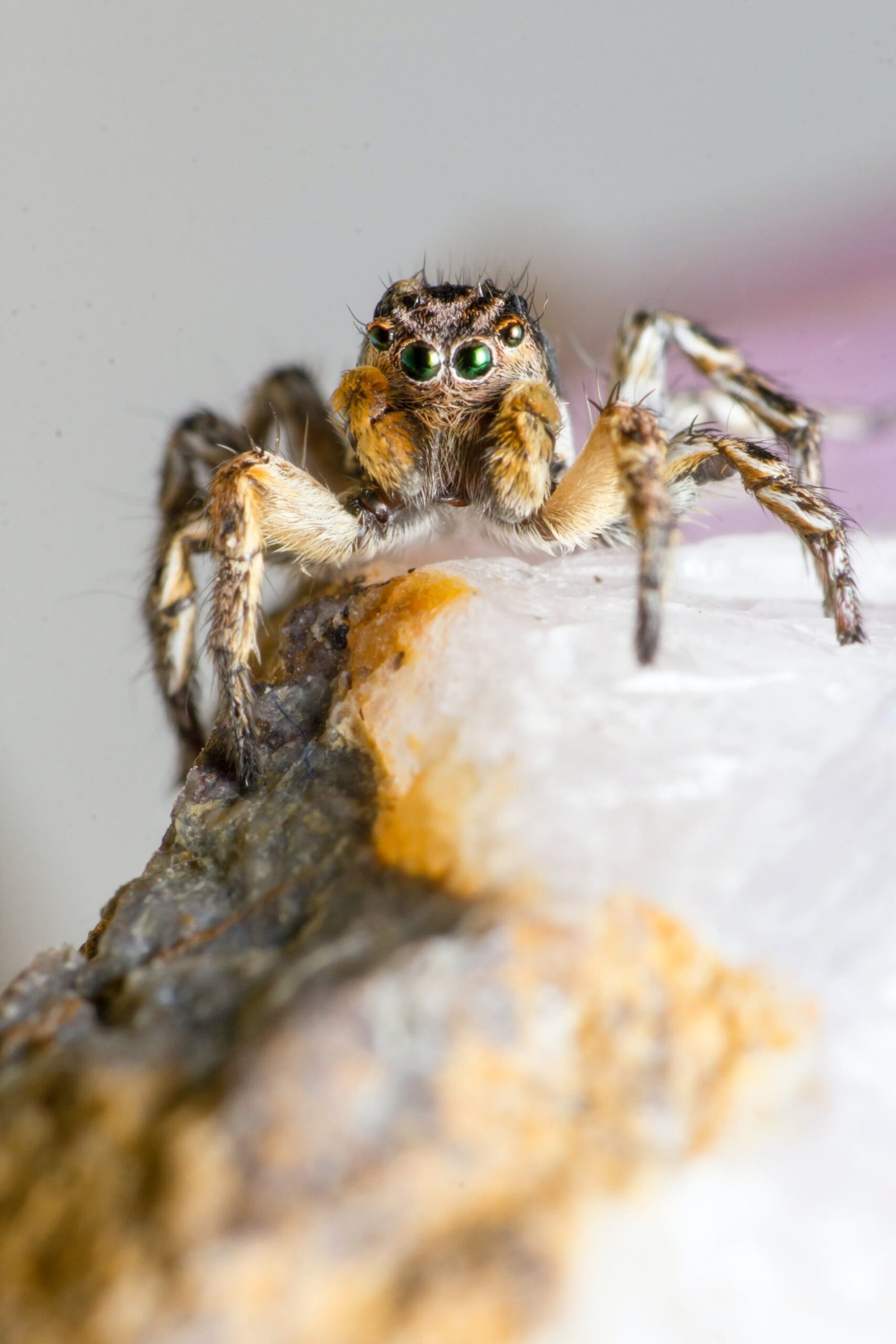Tarantulas may be known for their large size and fearsome appearance, but in the vast world of arachnids, they too face threats from predators. One such predator is the sun spider, a fast and agile arachnid that poses a significant threat to tarantulas. But how exactly do these hairy and eight-legged creatures cope with such formidable foes? In this article, we will explore the fascinating strategies that tarantulas employ to navigate their way through encounters with sun spiders, revealing the extraordinary adaptability and resilience of these fascinating creatures. So, prepare to delve into the intriguing world of tarantulas as we uncover the secrets of how they handle threats from predatory arachnids like sun spiders.

Overview of Tarantulas and Sun Spiders
Tarantulas and sun spiders are both arachnids, belonging to the class Arachnida. However, they differ in several aspects including their appearance, behavior, and habitats.
Description and Characteristics of Tarantulas
Tarantulas are large spiders known for their intimidating size and hairy bodies. They can vary in size from a few centimeters to several inches, depending on the species. They have eight legs, two body segments, and fangs used for biting and injecting venom. Tarantulas are typically nocturnal and have a lifespan ranging from a few years to several decades.
Description and Characteristics of Sun Spiders
Sun spiders, also known as solifuges or wind scorpions, are arachnids that resemble a mix between spiders and scorpions. Despite their name, they are not true spiders or scorpions but belong to their own order called Solifugae. With their streamlined bodies, sun spiders possess four pairs of legs that enable them to move swiftly. They lack venomous fangs but have large, powerful jaws (chelicerae) primarily used for capturing and manipulating prey.
Behavior and Defense Mechanisms of Tarantulas
Tarantulas have developed various behaviors and defense mechanisms to ensure their survival in their respective habitats.
Territoriality and Home Range
Tarantulas are territorial and establish their own home range, which can range from a few square feet to several acres. They mark their territory through specific scent trails and silk threads, warding off potential intruders.
Burrowing and Camouflage
Many species of tarantulas are burrowers, constructing intricate tunnels in the ground. This behavior provides them with protection from predators, extreme temperatures, and dry conditions. Additionally, tarantulas can blend in with their surroundings due to their coloration and texture, making them less visible to predators.
Venomous Bites
Tarantulas possess venomous fangs that are primarily used for subduing prey. While their venom is not generally harmful to humans, different species have varying toxicity levels. Tarantulas will use their venomous bites as a last resort if feeling threatened or cornered.
Throwing Urticating Hairs
In addition to venomous bites, tarantulas have a unique defense mechanism – the ability to throw urticating or irritating hairs from their abdomen. These tiny barbed hairs can cause intense itching and irritation in the eyes, nose, and skin of predators, giving the tarantula time to escape or ward off immediate threats.

Behavior and Defense Mechanisms of Sun Spiders
Sun spiders have distinct behaviors and defense mechanisms that aid in their survival in their natural environments.
Agile and Fast Movement
Sun spiders are renowned for their incredible speed and agility. They can move rapidly, often appearing as mere blurs in the desert or arid landscapes they inhabit. This swift movement allows them to escape predators and chase down prey efficiently.
Predatory Behavior
Sun spiders are predatory creatures, hunting a wide array of insects, other arachnids, and small vertebrates. They use their powerful jaws (chelicerae) to seize and immobilize their prey before consuming it.
Special Adaptations
Sun spiders possess strong sensory organs, particularly their long appendages known as pedipalps. These pedipalps are equipped with specialized sensory receptors, allowing sun spiders to detect vibrations, changes in temperature, and chemical signals in their environment. This sensory advantage enables them to locate prey and avoid potential threats effectively.
Encounters Between Tarantulas and Sun Spiders
The natural habitats of tarantulas and sun spiders often overlap, leading to occasional encounters between these two arachnids.
Natural Habitat Overlaps
Certain regions, such as arid desert environments, provide suitable habitats for both tarantulas and sun spiders. These areas offer sufficient food sources, shelter, and climate conditions for their survival.
Tarantulas as Prized Prey
Sun spiders view tarantulas as potential prey due to their size. Although tarantulas have a potent venomous bite and urticating hairs, they remain vulnerable to sun spider attacks, especially if they are caught off guard.
Role of Sun Spiders as Predators
Sun spiders play a crucial role in maintaining ecological balance as predators. They feed on other arachnids, insects, and small vertebrates, helping regulate populations and controlling potential pest outbreaks.

Responses of Tarantulas to Sun Spiders
When faced with threats from predatory arachnids like sun spiders, tarantulas have developed specific responses and defense mechanisms.
Fight or Flight Response
Tarantulas may exhibit a fight or flight response when encountering sun spiders. Depending on various factors, such as their size, the level of threat, and the availability of escape routes, tarantulas may choose to defend themselves or try to retreat.
Use of Predator Deterrents
In a defensive scenario, tarantulas may deploy their venomous bites or throw urticating hairs at sun spiders to deter them. The potency of their venom and the irritation caused by the hairs can dissuade predators from pursuing further.
Posturing and Threat Displays
In some cases, tarantulas may resort to posturing and threat displays to intimidate sun spiders and prevent an attack. This can include raising their front legs, displaying their fangs, and making loud hissing or stridulation sounds to signal their readiness to defend themselves.
Physical Adaptations of Tarantulas
Tarantulas possess a range of physical adaptations that contribute to their survival and success as formidable arachnids.
Size and Strength
Tarantulas are known for their larger size compared to other spiders. This size advantage allows them to overpower prey and deter potential predators through their intimidating presence.
Hairs and Barbs on the Exoskeleton
A tarantula’s exoskeleton is covered in fine, velvety hairs that serve multiple purposes. These hairs can act as sensory receptors, providing information about their surroundings, as well as offering protection by deterring potential threats with sharp barbs.
Venomous Fangs
Tarantulas have hollow fangs connected to venom glands. They deliver venom into their prey, immobilizing and killing it for consumption. While some tarantula venom can cause discomfort and swelling in humans, they are generally not highly dangerous.
Leg Spines and Appendages
Tarantulas possess leg spines and specialized appendages that aid in their locomotion and prey capture. These spines act as gripping tools, allowing tarantulas to climb various surfaces and maintain a firm hold on prey.

Physical Adaptations of Sun Spiders
Sun spiders have unique physical adaptations that enable them to thrive in their challenging environments.
Speed and Agility
Sun spiders have evolved to possess streamlined bodies, which contribute to their incredible speed and agility. This physical adaptation allows them to navigate through their surroundings swiftly and efficiently.
Powerful Jaws and Chelicerae
Sun spiders have robust jaws, known as chelicerae, which they use to seize and immobilize prey. Their large size and formidable strength enable them to overpower insects, arachnids, and small vertebrates that make up their diet.
Strong Sensory Organs
Sun spiders have specialized sensory organs, including long appendages known as pedipalps. These pedipalps possess sensory receptors that can pick up subtle vibrational cues, temperature changes, and chemical signals in their environment. This heightened sensory perception aids in food detection, navigation, and evasion of predators.
Strategies Used by Tarantulas
In addition to their physical adaptations, tarantulas employ several strategies to enhance their survival and reproductive success.
Burrowing and Retreat
Many tarantulas are burrowers, creating intricate tunnels in the ground as their primary habitat. These burrows provide protection from predators, extreme temperatures, and help maintain moisture levels. Tarantulas retreat into their burrows when threatened, making it difficult for predators like sun spiders to reach them.
Ambush and Surprise Attacks
Tarantulas are patient predators and often rely on ambush tactics to catch their prey. They may wait near the entrance of their burrow or hide under vegetation, pouncing on unsuspecting insects or small animals that come within striking distance.
Cooperative Defense
Some tarantula species exhibit cooperative behavior, often found living in colonies or groups. In these situations, individuals can work together to protect their nests or defend against threats, increasing the chances of survival for the group as a whole.
Group Living and Mobbing
Certain tarantulas engage in communal living, forming large colonies with hundreds or even thousands of individuals. This group living strategy can provide a level of protection against predators like sun spiders, as the combined numbers and coordinated defense can overwhelm potential threats.

Strategies Used by Sun Spiders
Sun spiders have evolved specific hunting techniques and strategies to maximize their effectiveness as predators.
Stealthy Hunting Techniques
Sun spiders employ stealth tactics when hunting, using their exceptional speed and agility to approach prey undetected. They remain low to the ground and move cautiously, minimizing vibrations and avoiding triggering alarm signals from their intended targets.
Quick Strikes and Predatory Efficiency
Once within striking distance, sun spiders deliver lightning-fast strikes using their powerful jaws. Their well-developed chelicerae allow for efficient prey immobilization, ensuring a quick kill and minimizing the risk of injury to themselves.
Detecting and Exploiting Weaknesses
Sun spiders are adept at detecting weaknesses in their prey, such as injuries or immobility. They can detect chemical signals released by injured prey, allowing them to focus their efforts on vulnerable individuals, increasing their chances of a successful kill.
Conclusion
Tarantulas and sun spiders, despite their differences in appearance and behaviors, have evolved various adaptations to cope with threats and ensure their survival. Overlapping habitats and occasional encounters between the two arachnids provide a fascinating glimpse into their coexistence and evolutionary adaptations. Understanding the behavior and defense mechanisms of these arachnids allows us to appreciate the diversity and intricate ways different species have adapted to thrive in their respective environments.
